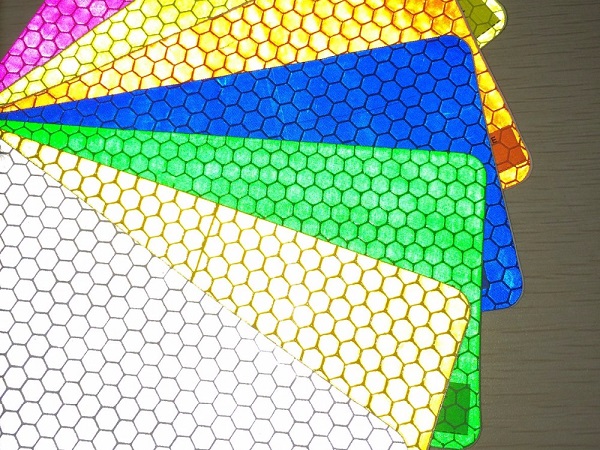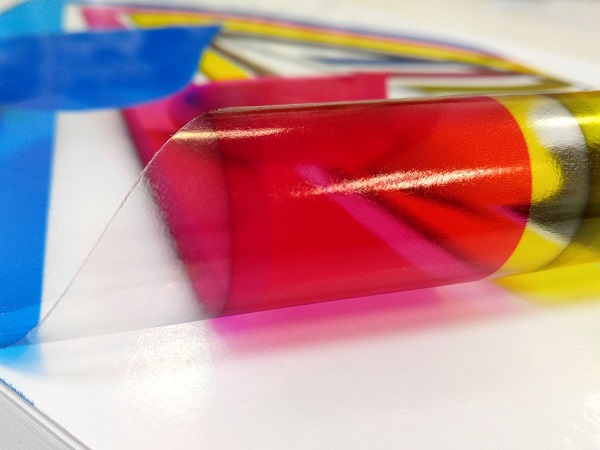Types of ink: Aqueous, Eco-solvent, Latex, UV
Aqueous: Of these four types, only aqueous ink requires top-coated media. All of the others can be used with un-coated media. What happens if you try to use un-coated media in an aqueous inkjet printer? This happens (Fig 1). The ink never really dries. It may even puddle or run off the surface because the required coating isn’t there to hold the ink droplets in place. There aren’t as many printable vinyl options for aqueous inkjet printers.
The other downside of using top-coated media is that the top-coat keeps the ink on the surface. This is fine for indoor use, but when placed outdoors, the ink is exposed to the full effect of the sun’s Ultraviolet radiation. This causes the ink to fade noticeably in a very short time. Pigment ink fades in a few months outdoors. Dye based inkjet prints may fade in weeks. Vinyl graphics printed with dye or pigment based aqueous ink require an added layer of clear coat or overlaminate film to be suitable for long-term outdoor use.
Types of Printable Vinyl. Cast, calendared, & Specialty
Calendared vinyl: Calendared vinyl is so named because it’s made by squeezing a mass of PVC
Cast Vinyl: Cast vinyl is made by pouring a liquid mixture of PVC and plasticizers onto a moving web. As the liquid passes through an oven, the moisture evaporates and leaves behind a thin layer of vinyl, generally 2mil thick. Because it’s made without stressing the film, cast vinyl has excellent dimensional stability. That and the thin 0.002″ face film make it ideal for application on compound curves. Think motorcycle helmets, and VW Beetle fenders. These are the vinyls generally used for applying vehicle wraps.


Ultra-calendared: The competitive world of vehicle wraps has created demand for a more affordable printable vinyl that can be used for some wrap applications that don’t require the conformability of a premium cast film.
Specialty Printable vinyls: That brings us to the catch-all category. Specialty vinyls are those with unique features and applications. These include perforated vinyls used for one way view graphics and high-tack vinyls made for decorating low energy substrates. Printable reflective vinyls might also be tossed in this bucket. Here are a few examples of specialty vinyls we stock for eco-solvent printing.
Perforated vinyls: These are vinyls that have perforated face film. The original version had half of the surface area removed. These are called one-way-view vinyls because when viewed from the printed side, the printed image is visible and the application is opaque. But when viewed from the opposite side, the effect is similar to window tint film. The back of the film is effectively translucent.



Reflective: We offer several reflective vinyls that are fully compatible with eco-solvent ink. These are finding use in traditional applications like police and emergency vehicles, but also as high impact graphic elements in commercial and custom vehicle wraps.




